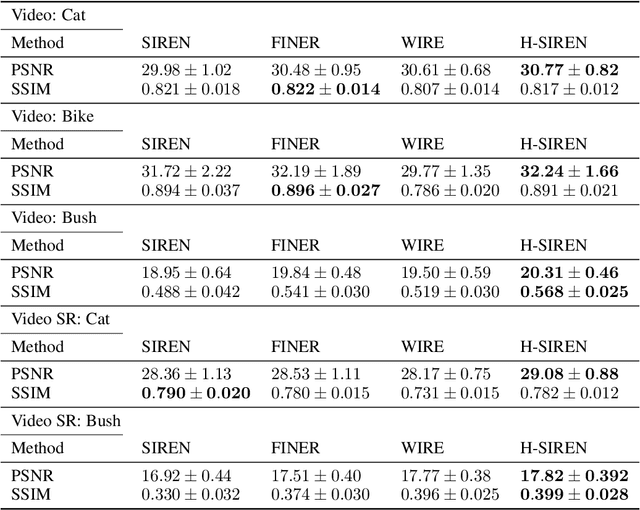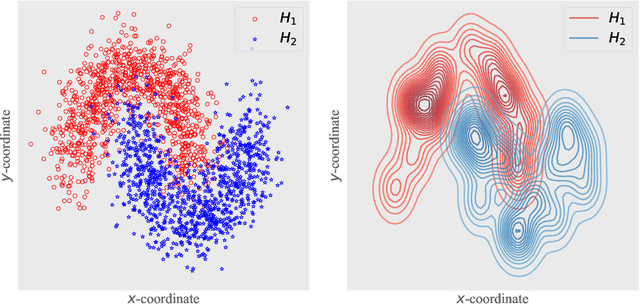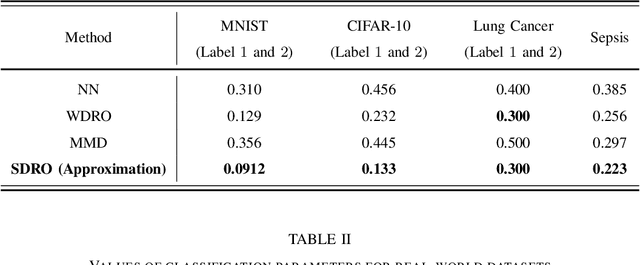Rui Gao
Data-driven modeling of fluid flow around rotating structures with graph neural networks
Mar 28, 2025Abstract:Graph neural networks, recently introduced into the field of fluid flow surrogate modeling, have been successfully applied to model the temporal evolution of various fluid flow systems. Existing applications, however, are mostly restricted to cases where the domain is time-invariant. The present work extends the application of graph neural network-based modeling to fluid flow around structures rotating with respect to a certain axis. Specifically, we propose to apply a graph neural network-based surrogate modeling for fluid flow with the mesh corotating with the structure. Unlike conventional data-driven approaches that rely on structured Cartesian meshes, our framework operates on unstructured co-rotating meshes, enforcing rotation equivariance of the learned model by leveraging co-rotating polar (2D) and cylindrical (3D) coordinate systems. To model the pressure for systems without Dirichlet pressure boundaries, we propose a novel local directed pressure difference formulation that is invariant to the reference pressure point and value. For flow systems with large mesh sizes, we introduce a scheme to train the network in single or distributed graphics processing units by accumulating the backpropagated gradients from partitions of the mesh. The effectiveness of our proposed framework is examined on two test cases: (i) fluid flow in a 2D rotating mixer, and (ii) the flow past a 3D rotating cube. Our results show that the model achieves stable and accurate rollouts for over 2000 time steps in periodic regimes while capturing accurate short-term dynamics in chaotic flow regimes. In addition, the drag and lift force predictions closely match the CFD calculations, highlighting the potential of the framework for modeling both periodic and chaotic fluid flow around rotating structures.
FetalFlex: Anatomy-Guided Diffusion Model for Flexible Control on Fetal Ultrasound Image Synthesis
Mar 19, 2025Abstract:Fetal ultrasound (US) examinations require the acquisition of multiple planes, each providing unique diagnostic information to evaluate fetal development and screening for congenital anomalies. However, obtaining a comprehensive, multi-plane annotated fetal US dataset remains challenging, particularly for rare or complex anomalies owing to their low incidence and numerous subtypes. This poses difficulties in training novice radiologists and developing robust AI models, especially for detecting abnormal fetuses. In this study, we introduce a Flexible Fetal US image generation framework (FetalFlex) to address these challenges, which leverages anatomical structures and multimodal information to enable controllable synthesis of fetal US images across diverse planes. Specifically, FetalFlex incorporates a pre-alignment module to enhance controllability and introduces a repaint strategy to ensure consistent texture and appearance. Moreover, a two-stage adaptive sampling strategy is developed to progressively refine image quality from coarse to fine levels. We believe that FetalFlex is the first method capable of generating both in-distribution normal and out-of-distribution abnormal fetal US images, without requiring any abnormal data. Experiments on multi-center datasets demonstrate that FetalFlex achieved state-of-the-art performance across multiple image quality metrics. A reader study further confirms the close alignment of the generated results with expert visual assessments. Furthermore, synthetic images by FetalFlex significantly improve the performance of six typical deep models in downstream classification and anomaly detection tasks. Lastly, FetalFlex's anatomy-level controllable generation offers a unique advantage for anomaly simulation and creating paired or counterfactual data at the pixel level. The demo is available at: https://dyf1023.github.io/FetalFlex/.
H-SIREN: Improving implicit neural representations with hyperbolic periodic functions
Oct 07, 2024



Abstract:Implicit neural representations (INR) have been recently adopted in various applications ranging from computer vision tasks to physics simulations by solving partial differential equations. Among existing INR-based works, multi-layer perceptrons with sinusoidal activation functions find widespread applications and are also frequently treated as a baseline for the development of better activation functions for INR applications. Recent investigations claim that the use of sinusoidal activation functions could be sub-optimal due to their limited supported frequency set as well as their tendency to generate over-smoothed solutions. We provide a simple solution to mitigate such an issue by changing the activation function at the first layer from $\sin(x)$ to $\sin(\sinh(2x))$. We demonstrate H-SIREN in various computer vision and fluid flow problems, where it surpasses the performance of several state-of-the-art INRs.
Regularization for Adversarial Robust Learning
Aug 22, 2024Abstract:Despite the growing prevalence of artificial neural networks in real-world applications, their vulnerability to adversarial attacks remains a significant concern, which motivates us to investigate the robustness of machine learning models. While various heuristics aim to optimize the distributionally robust risk using the $\infty$-Wasserstein metric, such a notion of robustness frequently encounters computation intractability. To tackle the computational challenge, we develop a novel approach to adversarial training that integrates $\phi$-divergence regularization into the distributionally robust risk function. This regularization brings a notable improvement in computation compared with the original formulation. We develop stochastic gradient methods with biased oracles to solve this problem efficiently, achieving the near-optimal sample complexity. Moreover, we establish its regularization effects and demonstrate it is asymptotic equivalence to a regularized empirical risk minimization framework, by considering various scaling regimes of the regularization parameter and robustness level. These regimes yield gradient norm regularization, variance regularization, or a smoothed gradient norm regularization that interpolates between these extremes. We numerically validate our proposed method in supervised learning, reinforcement learning, and contextual learning and showcase its state-of-the-art performance against various adversarial attacks.
Data-driven Multistage Distributionally Robust Linear Optimization with Nested Distance
Jul 23, 2024



Abstract:We study multistage distributionally robust linear optimization, where the uncertainty set is defined as a ball of distribution centered at a scenario tree using the nested distance. The resulting minimax problem is notoriously difficult to solve due to its inherent non-convexity. In this paper, we demonstrate that, under mild conditions, the robust risk evaluation of a given policy can be expressed in an equivalent recursive form. Furthermore, assuming stagewise independence, we derive equivalent dynamic programming reformulations to find an optimal robust policy that is time-consistent and well-defined on unseen sample paths. Our reformulations reconcile two modeling frameworks: the multistage-static formulation (with nested distance) and the multistage-dynamic formulation (with one-period Wasserstein distance). Moreover, we identify tractable cases when the value functions can be computed efficiently using convex optimization techniques.
SFC: Achieve Accurate Fast Convolution under Low-precision Arithmetic
Jul 03, 2024Abstract:Fast convolution algorithms, including Winograd and FFT, can efficiently accelerate convolution operations in deep models. However, these algorithms depend on high-precision arithmetic to maintain inference accuracy, which conflicts with the model quantization. To resolve this conflict and further improve the efficiency of quantized convolution, we proposes SFC, a new algebra transform for fast convolution by extending the Discrete Fourier Transform (DFT) with symbolic computing, in which only additions are required to perform the transformation at specific transform points, avoiding the calculation of irrational number and reducing the requirement for precision. Additionally, we enhance convolution efficiency by introducing correction terms to convert invalid circular convolution outputs of the Fourier method into effective ones. The numerical error analysis is presented for the first time in this type of work and proves that our algorithms can provide a 3.68x multiplication reduction for 3x3 convolution, while the Winograd algorithm only achieves a 2.25x reduction with similarly low numerical errors. Experiments carried out on benchmarks and FPGA show that our new algorithms can further improve the computation efficiency of quantized models while maintaining accuracy, surpassing both the quantization-alone method and existing works on fast convolution quantization.
Relating-Up: Advancing Graph Neural Networks through Inter-Graph Relationships
May 07, 2024



Abstract:Graph Neural Networks (GNNs) have excelled in learning from graph-structured data, especially in understanding the relationships within a single graph, i.e., intra-graph relationships. Despite their successes, GNNs are limited by neglecting the context of relationships across graphs, i.e., inter-graph relationships. Recognizing the potential to extend this capability, we introduce Relating-Up, a plug-and-play module that enhances GNNs by exploiting inter-graph relationships. This module incorporates a relation-aware encoder and a feedback training strategy. The former enables GNNs to capture relationships across graphs, enriching relation-aware graph representation through collective context. The latter utilizes a feedback loop mechanism for the recursively refinement of these representations, leveraging insights from refining inter-graph dynamics to conduct feedback loop. The synergy between these two innovations results in a robust and versatile module. Relating-Up enhances the expressiveness of GNNs, enabling them to encapsulate a wider spectrum of graph relationships with greater precision. Our evaluations across 16 benchmark datasets demonstrate that integrating Relating-Up into GNN architectures substantially improves performance, positioning Relating-Up as a formidable choice for a broad spectrum of graph representation learning tasks.
Non-Convex Robust Hypothesis Testing using Sinkhorn Uncertainty Sets
Mar 21, 2024



Abstract:We present a new framework to address the non-convex robust hypothesis testing problem, wherein the goal is to seek the optimal detector that minimizes the maximum of worst-case type-I and type-II risk functions. The distributional uncertainty sets are constructed to center around the empirical distribution derived from samples based on Sinkhorn discrepancy. Given that the objective involves non-convex, non-smooth probabilistic functions that are often intractable to optimize, existing methods resort to approximations rather than exact solutions. To tackle the challenge, we introduce an exact mixed-integer exponential conic reformulation of the problem, which can be solved into a global optimum with a moderate amount of input data. Subsequently, we propose a convex approximation, demonstrating its superiority over current state-of-the-art methodologies in literature. Furthermore, we establish connections between robust hypothesis testing and regularized formulations of non-robust risk functions, offering insightful interpretations. Our numerical study highlights the satisfactory testing performance and computational efficiency of the proposed framework.
Sentinel-Guided Zero-Shot Learning: A Collaborative Paradigm without Real Data Exposure
Mar 14, 2024



Abstract:With increasing concerns over data privacy and model copyrights, especially in the context of collaborations between AI service providers and data owners, an innovative SG-ZSL paradigm is proposed in this work. SG-ZSL is designed to foster efficient collaboration without the need to exchange models or sensitive data. It consists of a teacher model, a student model and a generator that links both model entities. The teacher model serves as a sentinel on behalf of the data owner, replacing real data, to guide the student model at the AI service provider's end during training. Considering the disparity of knowledge space between the teacher and student, we introduce two variants of the teacher model: the omniscient and the quasi-omniscient teachers. Under these teachers' guidance, the student model seeks to match the teacher model's performance and explores domains that the teacher has not covered. To trade off between privacy and performance, we further introduce two distinct security-level training protocols: white-box and black-box, enhancing the paradigm's adaptability. Despite the inherent challenges of real data absence in the SG-ZSL paradigm, it consistently outperforms in ZSL and GZSL tasks, notably in the white-box protocol. Our comprehensive evaluation further attests to its robustness and efficiency across various setups, including stringent black-box training protocol.
Point cloud-based registration and image fusion between cardiac SPECT MPI and CTA
Feb 10, 2024Abstract:A method was proposed for the point cloud-based registration and image fusion between cardiac single photon emission computed tomography (SPECT) myocardial perfusion images (MPI) and cardiac computed tomography angiograms (CTA). Firstly, the left ventricle (LV) epicardial regions (LVERs) in SPECT and CTA images were segmented by using different U-Net neural networks trained to generate the point clouds of the LV epicardial contours (LVECs). Secondly, according to the characteristics of cardiac anatomy, the special points of anterior and posterior interventricular grooves (APIGs) were manually marked in both SPECT and CTA image volumes. Thirdly, we developed an in-house program for coarsely registering the special points of APIGs to ensure a correct cardiac orientation alignment between SPECT and CTA images. Fourthly, we employed ICP, SICP or CPD algorithm to achieve a fine registration for the point clouds (together with the special points of APIGs) of the LV epicardial surfaces (LVERs) in SPECT and CTA images. Finally, the image fusion between SPECT and CTA was realized after the fine registration. The experimental results showed that the cardiac orientation was aligned well and the mean distance error of the optimal registration method (CPD with affine transform) was consistently less than 3 mm. The proposed method could effectively fuse the structures from cardiac CTA and SPECT functional images, and demonstrated a potential in assisting in accurate diagnosis of cardiac diseases by combining complementary advantages of the two imaging modalities.
 Add to Chrome
Add to Chrome Add to Firefox
Add to Firefox Add to Edge
Add to Edge